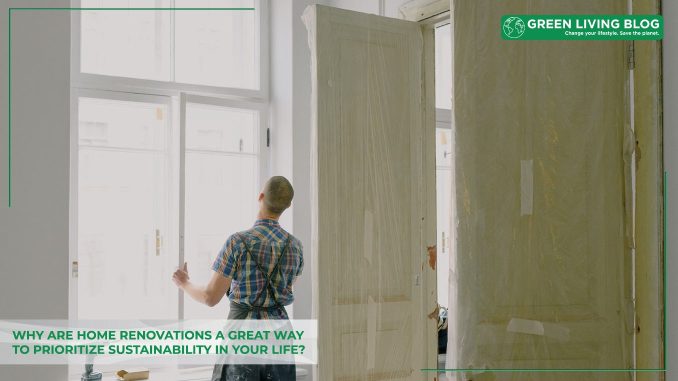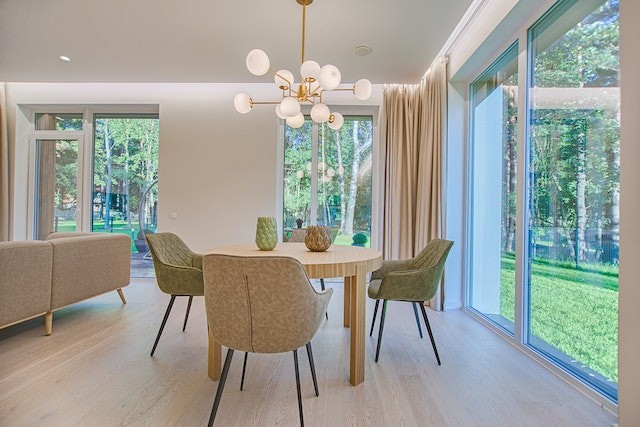
Renovating a house takes countless resources and energy expenditure.
However, it’s prime time to prioritize sustainability because antiquated, energy-inefficient facets of a home have a chance to jump into a new era of environmentally conscious components.
Here are some expert sustainable home upgrade and renovation tips to ensure minimal waste during construction and long-term eco-friendly living after completion.
Why You Should Make Sustainable Renovations

Constructing your dream home from scratch isn’t the most sustainable option, even when using sustainable materials. Working with existing infrastructure maximizes resources while reducing costs. Manipulating what you have requires fewer materials to be extracted from the Earth, less labor to be put into the construction, and minimal energy and the fuel used in the entire process.
Most fear the expenses associated with green renovations. Though it can potentially cost thousands more — depending on how involved it is — savings could be made in the future depending on smart technology and renewable energy implementation, such as solar panels or geothermal heating.
It’s vital to remember that all energy-efficient shifts are costly. However, choosing something like sturdy blinds is a small investment that yields significant savings on an electric bill.
It also provides greater insight into the habits and behaviors of the home’s residents. Choosing a sustainable assessment or evaluation of energy usage could be eye-opening to what you should prioritize in remodeling. This could reveal the best sustainable renovation tips curated for your household.
How You Can Make Renovations Eco-Friendly

Going into renovations without expert advice could end up wasting more resources. For example, professionals could find the windows release excess heat, requiring more attention to insulating the house and researching new windows. They could also say investing in new windows isn’t necessary, and that weatherstripping or caulking would suffice.
There are also plenty of organizations helping environmental stewards make informed decisions. Eco-friendly renovating is about patience since performing actions slowly and consciously takes more time than traditional methods, primarily when investing in battery-power tools over gas-powered equipment.
Other resources include:
- Energy Star: Assists if electrical and home appliances need replacing, giving you certified eco-friendly options.
- Green Built Alliance: Guides builders to achieve certifications in saving energy and water from third-party experts.
- Green Home Institute: Consults to offer educational and certification opportunities with comprehensive assessments and research.
- Secondhand and local artisans: Reusing materials is one of the most eco-friendly ways to furnish and decorate a home, especially if they are local, encouraging the use of found materials and reducing shipping costs.
You can also dive deeper and consider the home’s entire layout. Knocking down a couple of walls could create a more passive design, especially if a house is oriented in the right direction.
Passive homes take advantage of natural light and heat from windows from the sun and using the right floor and wall materials and colors could store that heat for gradual release throughout the evening. This significantly reduces energy costs and more naturally regulates temperature.
Renovations don’t have to do with just the inside either — landscaping can play a massive role in heating and shading a home. Various species of trees go dormant in the winter, allowing the sun to shine through. In the warmer months, their rich canopies could reduce the need for air conditioning.
So long as the flora is sourced appropriately, taken care of, and doesn’t negatively affect existing biodiversity, landscaping can be a game-changer.
What the Sustainability Impact Will Be

Sustainable renovation can impact every facet of the house. Here are some insights into how green home redesigns can have a positive impact on more than just the environment:
- Waste: Sustainable renovations do not create as much waste as building from scratch, and because you made every decision thoughtfully, there aren’t as many unused materials.
- Heating and cooling: Renewable energy and sustainable design create homes optimized for heating and cooling, reducing the need to use air conditioning or heating — even though those could be renewable and energy-efficient.
- Finances: The property value will increase because of priorities in the housing market, and sustainable shifts will also reduce utility bills drastically, giving more homeowners flexibility in their budgets.
- Maintenance: Sustainable materials and machinery use less energy and do not wear down as fast. Therefore, maintenance frequency and costs are reduced.
- Human health: Sustainable materials are better for human health, as facets like renewable energies improve air quality and mental health.
Ultimately, financing a green home is an investment in the planet’s longevity. The fact that sustainable renovation tips improve all these other life facets provides a more robust defense of why it’s the way to go.
Top Sustainable Renovation Tips
Thankfully, sustainability wears many hats in a house, from sourcing materials to optimizing water usage. Go into the project with realistic expectations concerning cost and time investments — every step will feel rewarding.
The contribution to the planet is astronomical, as decreasing individual carbon footprints requires doing what’s needed to protect it. Living in a sustainably renovated home is one of the best ways to invest in that greener future.
![]()
Author Profile

- Eco Warrior by day, Eco Blogger by night trying to get the eco balance right.
Latest entries
 Green GuidesNovember 3, 2025The Beginner’s Guide to Making Your Own Nontoxic Candles at Home
Green GuidesNovember 3, 2025The Beginner’s Guide to Making Your Own Nontoxic Candles at Home Green Home GuidesOctober 14, 2025What are Eco-Friendly Tissue Options for Modern UK Homes?
Green Home GuidesOctober 14, 2025What are Eco-Friendly Tissue Options for Modern UK Homes? Best practicesSeptember 17, 20253 Ways Young Families Can Commit to Sustainable Living
Best practicesSeptember 17, 20253 Ways Young Families Can Commit to Sustainable Living EnvironmentSeptember 9, 2025Eco-friendly Gardening on a Budget: 6 Sustainable Choices that make a Difference
EnvironmentSeptember 9, 2025Eco-friendly Gardening on a Budget: 6 Sustainable Choices that make a Difference





Leave a Reply
You must be logged in to post a comment.